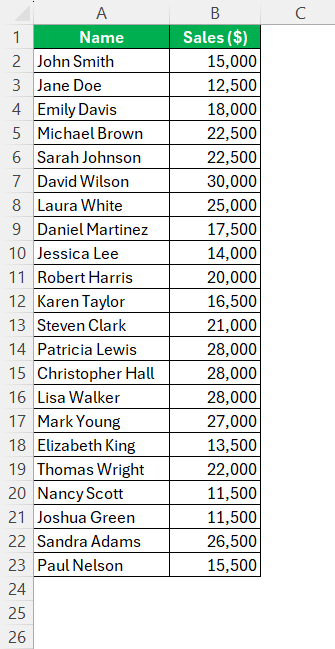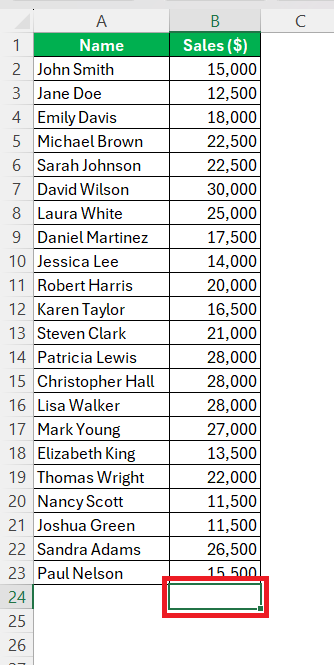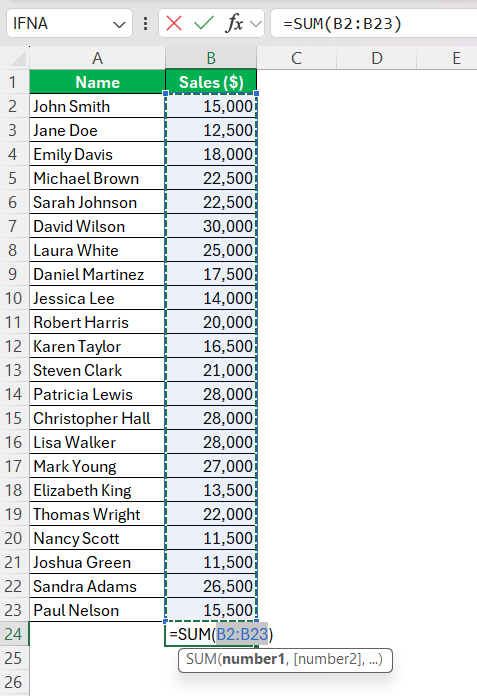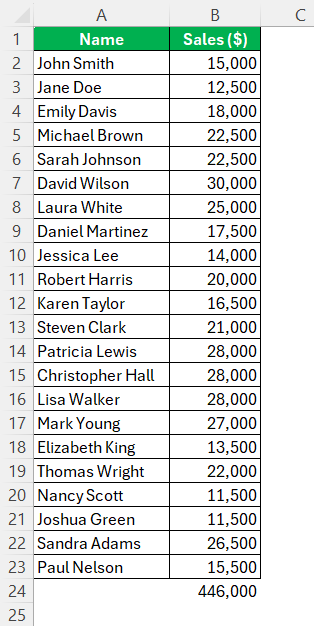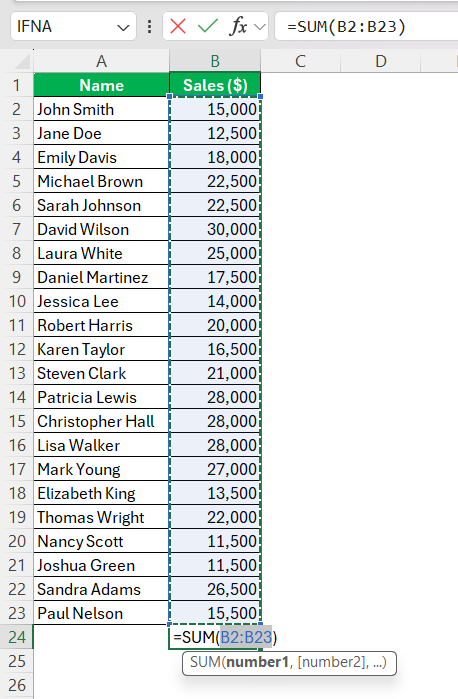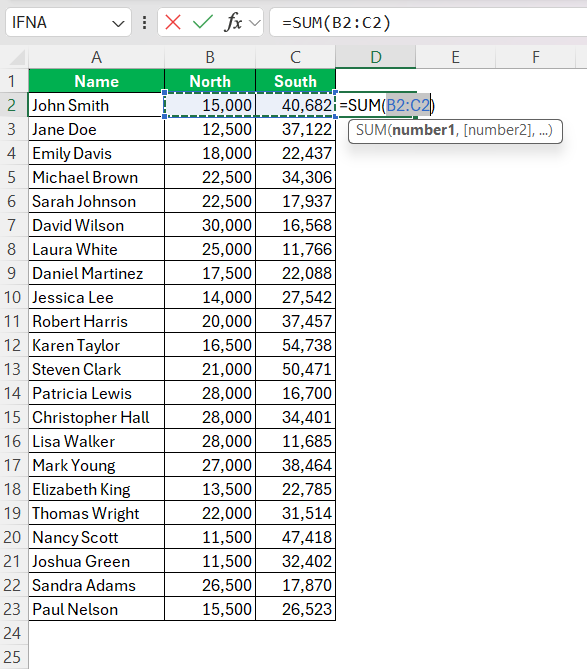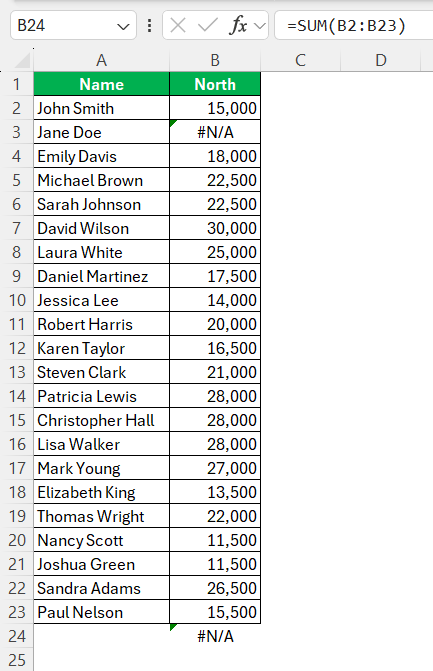When working with large datasets in Excel, summing a column is a common task that I often find myself doing. Whether I’m calculating totals, analyzing data, or preparing reports, knowing how to quickly sum a column can save me a lot of time. In this article, I’ll guide you through the different methods on how to sum a column in Excel.
Key Takeaways:
- Speed and efficiency: Mastering quick summation methods in Excel enhances productivity.
- AutoSum feature: This tool simplifies the summing process with just a few clicks.
- Keyboard shortcuts: ALT + = is a powerful shortcut for rapid column summation.
- Advanced techniques: AutoSum can be customized for specific ranges, across sheets, and for both rows and columns.
- Avoid common mistakes: Be cautious of hidden cells, errors in data, and updating ranges to ensure accurate sums.
Table of Contents
Unlocking Speedy Excel Calculations with a Pro Tip
The Need for Swift Summation in Data Analysis
In my career as a data analyst, I’ve noticed that time is often a valuable currency, especially when scrutinizing vast arrays of numbers. Swift summation isn’t just a convenience, it’s a necessity. Processing totals quickly allows us to discern trends, analyze financial statements, or evaluate inventory with alacrity.
It’s about efficiency: the faster you can sum up a column, the quicker you can move to insightful analysis.
How to Sum a Column in Excel
A Concise Guide to Using the AutoSum Feature
Using the AutoSum feature in Excel streamlines numerical summations, turning tedious tasks into a quick click. Here’s how to employ this nifty tool effectively:
STEP 1: Identify the column with the numbers you wish to sum.
STEP 2: Click the empty cell at the end of this column.
STEP 3: Navigate to the “Home” tab, spot the “Editing” group, and then click on the ‘AutoSum’ Σ icon. Once ‘AutoSum’ is clicked, Excel anticipates the range you require and proposes a sum formula.
STEP 4: Hit “Enter” and voilà! The total appears in the selected cell. The AutoSum formula is also visible in the formula bar.
This intelligent feature drastically cuts down the time I spend on data entry, allowing me to focus on more complex tasks.
Keyboard Accelerators to Rapid Column Addition
The beauty of Excel lies in its keyboard accelerators, which are my personal favorite productivity hack. To rapidly add up a column, my go-to move is the ALT + = shortcut—I swear by its efficacy. Here’s how it works:
Press ALT and the equals sign (=) together after clicking the cell where you want the sum to appear—typically right below your column of numbers. Excel smartly selects the entire range for you and inputs the SUM function. By hitting Enter, the calculation is complete.
This method is incredibly useful when dealing with long columns, as it negates the need for dragging the mouse and possibly missing out on some cells.
Just to confirm, ALT + = is indeed the shortcut that has earned a permanent spot in my Excel arsenal for rapid column addition.
Enhancing Your Summing Techniques
Advanced Approaches to AutoSum
When I delve deeper into Excel’s toolkit, it’s clear that there’s more to AutoSum than meets the eye. Here are some advanced approaches:
- Custom Range Selection: Before pressing AutoSum, you can first select the specific range of cells you want to sum. Excel will then only calculate the sum for that particular selection.
- AutoSum Across Sheets: You can even sum data across different sheets. Simply click on AutoSum, then select the cells from the different sheets you want to include in your calculation.
- Using AutoSum for Rows and Columns: You don’t have to limit yourself to columns; AutoSum works for rows too. To sum across a row, place your cursor to the cell immediately to the right of the row, and use the same AutoSum feature.
These advanced maneuvers showcase the power and versatility of AutoSum, transcending simple column addition.
Mistakes to Avoid When Summing Columns Quickly
In my career, I’ve noticed that even seasoned veterans can slip up when using shortcuts, especially under time pressures. Let’s look at some common mistakes to avoid:
- Neglecting Hidden or Filtered Cells: AutoSum includes all cells in a range, even the hidden ones. Always double-check to ensure that this inclusion doesn’t skew your totals.
- Ignoring Errors in the Data: If a cell within your range contains an error (like #DIV/0!), AutoSum will return an error for the entire sum. Cleanse your data first to avoid this pitfall.
- Forgetting to Update the Range: If you add rows of data after summing a column, remember to update the range. AutoSum won’t automatically include new data below the initial sum cell.
By steering clear of these common mistakes, you can maintain the accuracy and reliability of your rapid calculations. I always take a moment to confirm that the sum reflects the correct range; better safe than sorry.
Real-World Applications and Time-Saving Scenarios
Case Studies: How Professionals Benefit from Faster Summing
In my research and interviews, I’ve encountered numerous professionals who have harnessed the power of faster summing to their advantage. Let’s review a couple of case studies:
- A financial analyst from a bustling Wall Street firm shared that quick summing shortcuts in Excel allowed him to provide real-time analysis during market hours, giving them a sharp edge over competitors.
- A project manager in a large construction company reported that by using Excel’s summing shortcuts, she could instantly update budget forecasts and resource allocations, increasing the firm’s agility in decision-making.
These stories are a testament to the real-world impact of mastering Excel’s summing shortcuts, demonstrating their contribution to efficiency and informed decision-making in various professional settings.
Optimizing Your Workflow with Excel’s Sum Shortcut
In my experience, integrating Excel’s sum shortcut into your daily workflow is a game changer, offering a seamless transition from data entry to analysis. Here are a few tips to optimize your process:
- Consistency: Make it a habit to use Excel’s sum shortcut for every suitable task. Muscle memory will make the sequence second nature, reducing the time you spend summing columns over time.
- Shortcuts Cheatsheet: Keep a list of Excel shortcuts handy. As you grow accustomed to the sum shortcut, gradually incorporate additional shortcuts into your routine to further streamline your workflow.
- Combine with Other Functions: Don’t stop at summing; explore combining the SUM function with other Excel functions to tackle complex tasks more efficiently.
By weaving shortcuts into the fabric of your Excel usage, you elevate your proficiency and productivity to new heights.
FAQs on Excel’s Column Summing Shortcuts
What is the Keyboard Shortcut for Quick Summation in Excel?
The keyboard shortcut for quick summation in Excel is ALT + =. This magical combination, when pressed after selecting the cell where you want your sum to be displayed, prompts Excel to calculate the total of numbers in the column above that cell, immediately giving you the sum upon pressing Enter.
Can You AutoSum Multiple Columns Simultaneously?
Yes, absolutely. To AutoSum multiple columns simultaneously, you simply select the cells at the bottom of each column where you want the sum to appear. Then hit the AutoSum button or use the ALT + = shortcut, and Excel will place a sum formula in each of the selected cells for their respective columns. It’s a real-time saver when working with multiple data sets.
Are There Any Limitations to the Summing Shortcut in Excel?
Indeed, the summing shortcut in Excel has its drawbacks. It will automatically sum all the contiguous cells above it, up to the first blank cell. Hence, if there’s a blank cell in your range, cells above won’t be included in the sum. Also, this function might not consider filtered out or hidden cells accurately. To counteract these limitations, ensure no unintended blank cells are in your range, and consider utilizing alternative methods for complex datasets.
How do I quickly sum a column in Excel?
To quickly sum a column in Excel, click the cell at the bottom of the column you wish to sum, then press the ALT and = keys together. This action prompts Excel to automatically insert the SUM formula. Complete the process by hitting Enter to display the sum of the cells above.
What is the Alt += in Excel?
The Alt += is a keyboard shortcut in Excel that triggers the AutoSum function. When I press these keys together, Excel inserts the SUM formula and selects an appropriate cell range for the calculation instantly, saving time and clicks during data analysis. It’s a streamlined way to add up a series of numbers horizontally or vertically without manually entering the formula.
John Michaloudis is a former accountant and finance analyst at General Electric, a Microsoft MVP since 2020, an Amazon #1 bestselling author of 4 Microsoft Excel books and teacher of Microsoft Excel & Office over at his flagship MyExcelOnline Academy Online Course.

